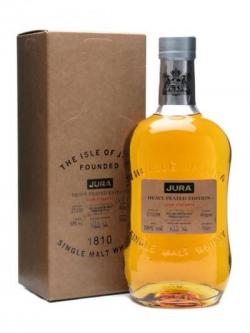
There are not a vast number of Juras from the 60s available to try but there are some phenomenal 1966s bottled by Signatory and, in particular, Samaroli. The original distillery was indeed built in 1810 but was dismantled in 1901, the current distillery was built on the same site in 1963. Although the labels on Jura bottlings state that the distillery was founded in 1810 this is a big pile of hogwash. Although it currently seems to be undergoing something of a renaissance due to some very classy bottlings and a consistently excellent peated variant that has been produced since the late nineties. A D is one star and a D- one-half of a star.Jura (pronounced: JOO-ra) has suffered something of an uneven reputation over the years due to a distinct inconsistency in the quality of its output. A C- is two stars.ĭ+ to D-: Below average whiskey. A B- is three stars.Ĭ+ to C-: Average whiskey. The best of the mass market whiskeys fit in this category, as do the bulk of the premium brands. Five stars.Ī-: A fine bottle of whiskey, representing the top end of the conventional, premium range.ī and B-: Good and above average. Above five stars.Ī: An outstanding bottle of whiskey, but lacking that special something which makes for a true masterpiece. A+: A masterpiece and one of the ten best whiskeys of its type. Some "premium" whiskeys really are quite terrible, while some mass market products are good enough to pour into a decanter and serve to the Duke of Edinburgh.

The following indicators should be taken as only a guide and not a set of hard and fast rules. The Whiskey Reviewer uses a letter-based rating system, instead of the numerical 100-grade rating system. Rounding out the picture are silvers from the 20 International Spirits Challenge. The scotch also won a Platinum medal from the Beverage Testing Institute in 2010, and a Best in Show from the 2010 San Francisco Wine and Spirits Competition. Apparently the judges liked it better the second time around. In 2009, Prophecy went to the International Wine and Spirits Competition and won a Silver – Best in Class, only to return the next year, improve on it performance and capture the Gold – Best in Class. Strangely, the scotch seems a bit cheaper in the United States than it is closer to its homeland, where it usually goes for about $65. In the UK, this retails for about 50 £, and in Europe for about 60 euros.

The finish lasts for a middling length of time, has a bit of a fiery bite to it, but for the most part is so smoky it evokes the notion of standing in the malting room when the peat fire has been burning a good while. The flavor is bold, spicy and intensely peaty.

On the nose, Prophecy is strong with peat, with a silky undercurrent of sea spray to it. Prophecy is a ballsy scotch, but not lacking in subtlety for all that. It does without chill filtration, and is bottled at 46% alcohol, substantially stronger than many a scotch today. In invoking a local legend, Prophecy anchored itself to a more traditional style of scotch-making. In 1938, Charles Campbell, a Great War veteran who had lost an eye in the conflict, fell onto hard times and left the island, a white horse towing his things. However, some of the inspiration for Jura’s scotches are more local, and such is the case with their Prophecy single malt scotch whiskey.Īs the story goes, in the early 18th century the Campbells of Jura evicted a wizened old seer from the island, who promptly cursed the Campbells with a little prognostication: that the last Campbell would leave the island one-eyed, his belongings all in one cart towed by a single white horse. The Isle of Jura whiskey line draws some inspiration from Celtic legends and mysticism, and much of the Jura image is inspired by things Celtic.


 0 kommentar(er)
0 kommentar(er)
